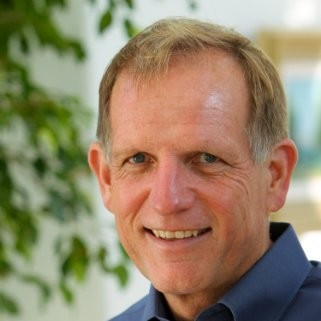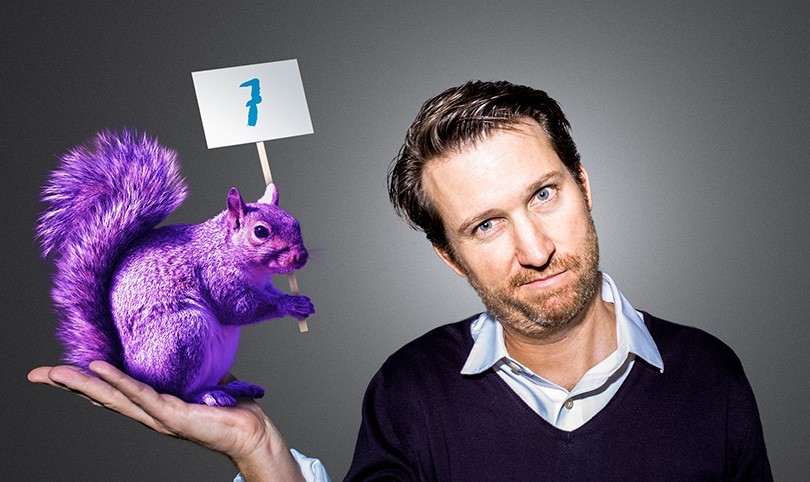Brendan Browne Looks Back on 10 Years as LinkedIn’s Head of Recruiting
When Brendan Browne joined LinkedIn in 2010 to lead talent acquisition, the company had fewer than a thousand employees, recruited in three countries, and had a talent team of — hold your breath — a dozen people. Today, his team of 350 works out of 15 countries. There are nearly 16,000 people working full-time at LinkedIn and nearly all were found by someone on Brendan’s team.
Brendan’s work has profoundly shaped LinkedIn. But he has also had an impact on the recruiting community more broadly, advocating relentlessly for sharing best practices, whether those have been developed at LinkedIn or elsewhere.
In 2016, Brendan and Pat Wadors, then the head of HR at LinkedIn, began a video series called Talent on Tap that has addressed the most pressing issues in talent acquisition and HR. Pat left LinkedIn in 2017 but Brendan has continued on, producing another two dozen episodes of Talent on Tap, many focused on steal-worthy approaches taken at other organizations — from how GitLab pioneered an all-remote workforce to how NBCUniversal created a powerful employee value proposition.
This episode of Talent on Tap will be much more personal: It’s Brendan’s signoff as he moves onto his next play. Which also makes this our chance to say thank you for being a generous partner and an inspiring leader.
The Talent Blog sat down with Brendan to capture his thoughts on having led LinkedIn’s global talent acquisition operation for more than a decade.
Q: How has recruiting changed in your time at LinkedIn?
Brendan: The biggest thing has been the availability and use of data, which is probably an old topic. But it’s important to underscore because there was a time — probably not in 2010, but not too many years prior — when you would pay someone $100 an hour to generate a name. LinkedIn obviously changed all of that.
And then you were able to get other pieces of information about someone — how are they connected to people in your network, whether they follow your company, or if they had ever applied to a job at your business. That was such a huge leap forward from a world in which it was highly manual and you’d pay a lot of money to get sort of data and intelligence.
Q: In the future of recruiting, what excites you most?
Brendan: Short term, I’m excited about certain aspects of technology that will enable people to get back to what are the very human parts of talent. A lot of people get so focused on tech as the solution. I look at a lot of the tech as tools that can give me a chance for five more meaningful conversations with great prospective candidates where I can tell the story, where I can really influence them in a very humanistic approach. Those conversations are possible because technology enabled me to get a bunch of tactical things off my plate.
Tech will just be table stakes moving forward. The premium will be on things like coaching hiring managers and influencing and advising them and their teams on how to be world class in creating good interview and assessment experiences.
There’s also so much opportunity, now that there’s data available, to be more strategic about, hey, what geography should we go to? What should be our take on an all-remote strategy? All of those things are made possible by technology. But the real premium and focus will be on, do you have the soft skills as a talent professional to have the type of impact that allows you to get away from being transactional?
Q: How might remote work change the talent acquisition landscape?
Brendan: Recruiting talent where the talent’s at is a monumental game-changer. Going back to past companies, before LinkedIn, I remember paying a lot of money to consulting firms to come in and do geographic analysis of where we should open the next office and that sort of thing. Now that data is basically at people’s fingertips. So, there’s a really interesting opportunity to help advise the business along those lines.
But in terms of what remote work means from a recruiting point of view, diversity leaps to mind, for sure. We’re seeing it now in a lot of companies that are taking a remote-first approach or a hybrid approach. Those companies are going to have a sustained advantage. You create a really interesting value proposition when you can tell a candidate that they don’t need to uproot and move to a very expensive metro region to be in the high-tech field — they can do it from exactly where they are.
Q: What’s the best recruiting advice you’ve ever received?
Brendan: The best piece of recruiting advice I received — and we do some training on this too — was to embrace the phrase “I’m concerned.” And the reason I bring it up is because it’s so universally applicable. Doesn’t have to be recruiting. Just the power of being honest with someone when in fact you are concerned. And the words “I’m concerned” are pretty potent, even pointed a little bit. But it can change the dynamic in a productive way.
If I’m concerned, I just need to say, “Bruce, can I talk to you? I’m concerned.” And all of sudden I’ve got your attention. “What are you concerned about?” “I’m concerned that you haven’t gotten me the job description. You really wanted this job filled as quickly as possible, but now you’re three days behind.” It opens up conversation to be a little bit more honest.
Q: What are the key skills talent professionals will need moving forward?
Brendan: A couple of things come to mind. Having facility with data tools. To be able to sit down with a hiring manager and be able to say, “Hey, we believe there’s a few interesting regions we can focus on to have people working remotely there.” The tooling is there. We need to make sure recruiters are skilled at using those tools and know how to articulate their point of view more clearly to hiring managers. There are a lot of tools and a lot of data now available that weren’t around even five years ago.
Another thing: A large part of what talent acquisition does is marketing, and thinking like a marketer has never been more important. When I started at LinkedIn, I’m not sure we even had photos on profiles and the feed was just starting. But I bring that up because thinking about content and thinking about it strategically, now it’s table stakes. You have to do that well. You have to do that thoughtfully. You have to have a plan. You need to create different kinds of experiences with events, which have taken on such a new dimension. We did the Open Mic series at LinkedIn, which took the idea of an open house and flipped it on its head completely, creating a different experience for people.
One more: I came to LinkedIn valuing the art of storytelling. But talk about a place where you want to be a good storyteller. The LinkedIn story is just unbelievably powerful. To be able to tell that is a recruiter’s dream job, as far as I’m concerned. You want to go represent a company that you can get people’s attention with and inspire people. So, that’s kind of what led to, “We need to teach people this in a meaningful way.” All of our team members understand that the best way that we’re going to close great talent is from the beginning to paint this vivid picture of what it means to be a part of LinkedIn and what LinkedIn is trying to achieve. It was something I had in my bag of tricks, but it was just put on steroids when I came to LinkedIn because the company has such an amazing story.
Q: What’s the biggest misperception about recruiting?
Brendan: It’s less about a misperception and more about not having a deeper understanding of what the functions were available. Some people may see talent acquisition as important and transactional; whereas, I’d say it’s important and it goes far beyond the transactional. It’s not simply, “Hey, I’m offering you a job. Here’s a piece of paper. Sign the piece of paper.”
When you think about it, using data to influence where we should go hire people, or the marketing aspect of what we’re talking about, or teaching leaders how to become better storytellers, those things are about strategy, those things are about teaching. Some of it is the depth of what goes on in talent acquisition; some of it is that more and more people are realizing that, whoa, the people function overall — particularly over the past year — has never been more important.
Q: What’s the thing as you look back that you’re most proud of here at LinkedIn?
Brendan: Literally helping to build the company: If we look at the number of hires that have been made over the course of my time at the company, having that type of impact on shaping the company via great recruits. And 1A, 1B, and 1C would be building the recruiting team that did that work.
Many of the folks who did that are now in recruiting leadership roles at LinkedIn, while others folks have gone on to other companies to do great things. That was something I’d always tell our recruiting team: “We want all of you, if you choose it, to have a job like mine. Or to go off and do amazing things in the world of talent acquisition.”
On a 10-year time horizon, you’re able to look back and see that that is happening. That’s pretty special to be part of transforming people’s careers and, frankly, having mine transformed as well.
To receive blog posts like this one straight in your inbox, subscribe to the blog newsletter.
Topics: Talent leadership Talent On Tap
Related articles




